He co-founded an artist group in the 50s to mark a new beginning after the Nazi era. His influence remains today.
The sculptor and painter Heinz Mack had a decisive influence on Germany's art history during the post-war period. Born in the village of Lollar in the German region of Hessen on March 8, 1931, Mack moved to Düsseldorf in the early 1950s, at a time when the city still bore the scars of the Second World War. An early starter, Mack submitted his portfolio to the Düsseldorf Art Academy before graduating from high school and was accepted.
Over the years, the artist made a name for himself thanks to his kinetic sculptures and use of light and its reflection. His fascination with the effects of light stems from childhood, he told DW in a 2011 interview. "Light played a big role even at the end of the war; there was just a five-watt light bulb in the hallway. It was always dark."
Then, while living in the city of Krefeld, he witnessed the first bombing raid. "I stood in the street when I was 14 years old and watched this spectacle; as though it were from the devil. It was fascinating; it was an important experience."
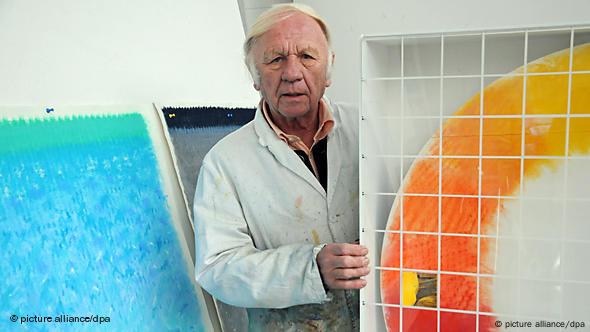
Heinz Mack has long been interested in the effects of light in his work
Creative use of materials
Early in his career, Mack began to move away from using canvases. When he accidentally stepped on a metal plate lying on a carpet in 1953, the structure of the impression fascinated him. So much so that he stopped painting altogether. He began to experiment with metal, stone, water, glass and mirrors and built dynamic spatial constructions, as well as kinetic sculptures.
Mack is perhaps best known for his involvement in the Düsseldorf artist movement, the ZERO group. He founded it in 1957 along with fellow artists Otto Piene and Günther Uecker. "ZERO was the end of an unfortunate time that had been marked by the Third Reich. The question about what was happening in this vacuum then arose," Mack later told DW. "In that artistic and intellectual void, ZERO offered closure and the chance for a beginning from which everything would start anew."
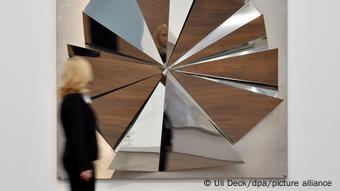
Works like the 'Silver Fan' (pictured) reflect light in unique ways and do not involve a traditional canvas
The end of a difficult period
During the ZERO movement, which lasted until 1966, Uecker, Piene and Mack also created collaborative works, such as the Zero room for documenta 1964: a large light installation made of rotating pieces. The group established contacts as far away as Japan.
The ZERO artists were unafraid to take their fate into their own hands by organizing their own exhibitions. Recognized Düsseldorf gallery owner Alfred Schmela also invited the group to use his gallery space, which at the time was only ten square meters (107 square feet) in size. It was thanks to him that ZERO became so successful, Mack says.
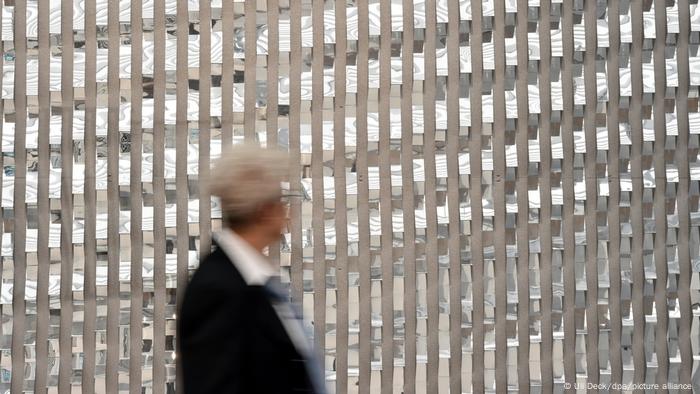
Mack gained fame for founding the ZERO art collective in the 1950s which aimed to usher in the new post-Nazi era
Mack's sculptures in urban spaces
Many of Mack's sculptures can still be seen in German cities today, such as his ceiling mosaics in a shopping mall in Düsseldorf, water terraces at the North Rhine-Westphalian parliament, or a stele in the sculpture park in Münster. Mack and fellow ZERO artist Otto Piene were even hired by the the Düsseldorf Opera. In 1967 the ZERO members split up, but Mack continued his artistic work nonetheless.
He is best-known for making light the most important design element of his artworks; in many of his works, light refracts in shimmering silver relief images made of aluminum or glass.
Some of his sculptures are kinetic, powered by engines: glistening, moving entities. His radical works include a so-called Water Cloud, a Silver Fan and even a Light Carousel that makes a spectrum of colors dance in space. His steles made of glass, steel and brass are grouped together into the Small Stele Forest, setting light in motion. Mack took his experiments to the extreme in the 1960s with his so-called "Sahara Project."
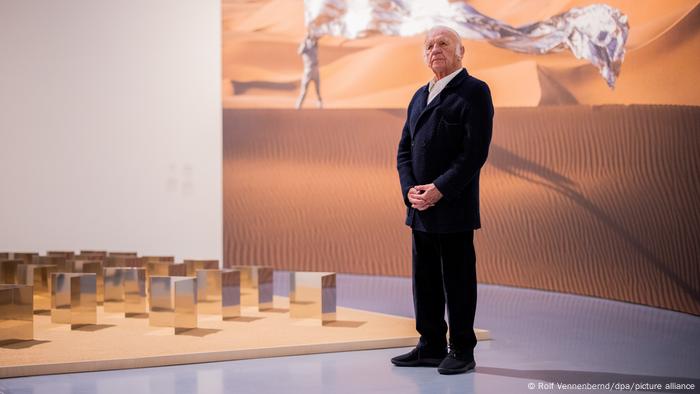
In the 1960s, Mack built a series of installations in the Sahara desert and also made a film related to the works
To the artist, the desert is a "space without end, where any attempt to find a location is ruled out." He was especially impressed by the boundless expanse of the Sahara Desert. From 1962-1963 onward, Mack installed several "artificial gardens" in the African desert. He created these artificial worlds, which were constructed and deconstructed, using wing reliefs, cubes, mirrors, sales, banners and even a large light stele. "To set up a sculpture in this infinite space of light was very exciting; if you moved 500 meters away from it, it appeared to be only light." The Sahara Project was also the subject of his 1968 artistic film Tele-Mack in which he can be seen wandering through the desert in a silver suit. In 1976, he also placed installations in the Arctic, including prismatic pyramids.
This article was translated from German by Sarah Hucal.
"artist" - Google News
March 08, 2021 at 11:07PM
https://ift.tt/3cb03nU
Radical artist Heinz Mack turns 90 - DW (English)
"artist" - Google News
https://ift.tt/2FwLdIu
Bagikan Berita Ini
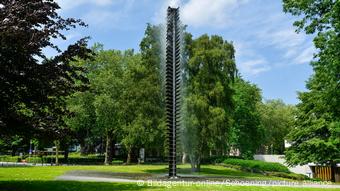














0 Response to "Radical artist Heinz Mack turns 90 - DW (English)"
Post a Comment